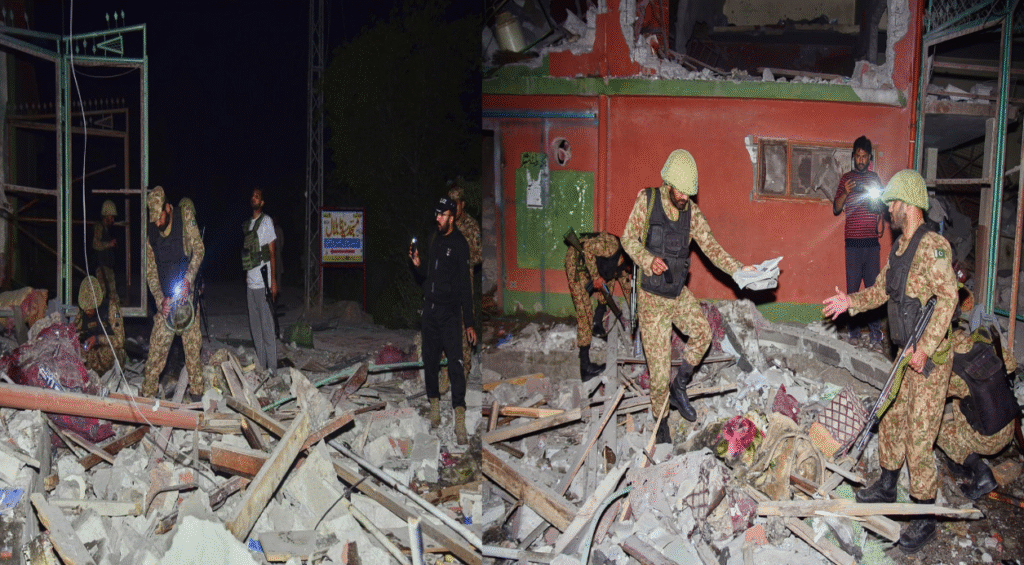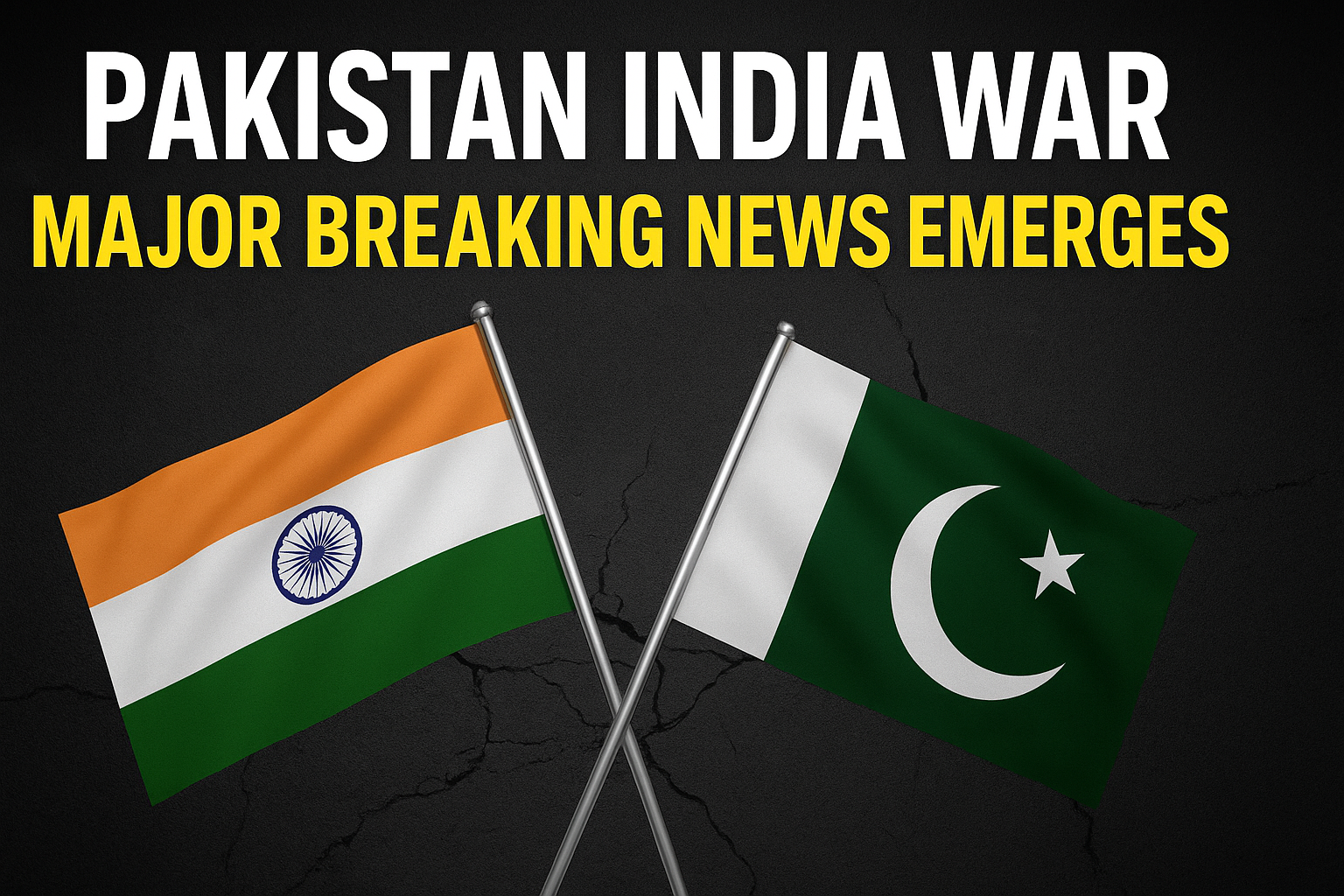Pakistan India War Major Breaking News Emerges as border tensions rise. Get the latest verified updates, global reactions & impacts on South Asia today.
Pakistan-India relations have once again reached a boiling point, as the latest reports suggest the situation between the two countries is rapidly deteriorating. Escalating skirmishes and increased military movements along the border have fueled fears of a potential Pakistan-India war, a concern that has drawn the attention of global powers. Both nations, which share a long history of disputes, are currently facing one of the most serious escalations in recent years. The Pakistan-India war narrative has reemerged as a central concern for South Asian security analysts, particularly as developments along the Line of Control (LOC) and international statements signal rising instability. While neither Islamabad nor New Delhi has officially declared war, the rapid intensification of military activity, coupled with diplomatic tensions, has raised alarms across the international community.
Pakistan India War Major Breaking News Emerges – Escalation Along the Border
Reports indicate a noticeable uptick in cross-border incidents in recent weeks. The Line of Control (LOC), which separates Indian-administered Jammu and Kashmir from Pakistani-administered territory, has seen multiple ceasefire violations according to military statements from both sides. Pakistan’s military sources report unprovoked firing incidents targeting civilian areas, leading to casualties and infrastructure damage in villages near the border. India, on the other hand, has accused Pakistan of initiating hostilities and claims that its armed forces have been responding to protect its territory. The Working Boundary, which divides Punjab from Indian-administered Jammu, has also seen unusual movement of heavy artillery and troop reinforcements. Although these deployments have not been officially categorized as offensive preparations, their timing has intensified speculation about the possibility of a broader conflict. Civilian populations near these areas remain vulnerable. Displacement has already been reported from several frontline villages, with families seeking shelter in safer zones as uncertainty grows. Local administrations in both countries have increased monitoring, medical preparedness, and food stockpiles in anticipation of further hostilities.

Historical Context of Pakistan-India Tensions
The roots of the Pakistan-India conflict lie in the partition of the Indian subcontinent in 1947, which created the independent states of India and Pakistan. Since then, the Kashmir dispute has remained the core point of contention. Both nations have fought several wars — in 1947-48, 1965, and 1971 — along with the Kargil conflict of 1999. The Kashmir issue, stemming from differing territorial claims, has been the epicenter of political, military, and diplomatic disputes for decades. Despite numerous bilateral agreements, including the 1972 Simla Agreement and the 2003 Ceasefire Understanding, peace has remained elusive. The current situation along the LOC appears to be the most severe escalation since the 2019 Pulwama-Balakot crisis, which brought the two nuclear-armed nations dangerously close to full-scale conflict.
Nuclear Dimension and Strategic Concerns
One of the most significant factors heightening global anxiety about a Pakistan-India war is the nuclear capability of both nations. India and Pakistan are among the few countries in the world with established nuclear arsenals and delivery systems. The potential for miscalculation in an environment of escalating hostilities raises grave risks not only for South Asia but also for international stability. According to the Stockholm International Peace Research Institute (SIPRI), both India and Pakistan have steadily expanded their nuclear capabilities over the past decade. Experts warn that even a limited conventional war could escalate into a nuclear exchange if diplomatic channels break down or if one side misinterprets military movements as preparation for a strategic strike.
Concern of the International Community
The United Nations, through its spokesperson, has urged both Pakistan and India to avoid escalation and return to dialogue. The Secretary-General has emphasized the importance of upholding existing agreements on ceasefires and respecting international law. Similarly, the United States Department of State has expressed concern, calling on both countries to “exercise restraint and avoid actions that risk regional peace.” China, which shares borders with both India and Pakistan, has urged a peaceful resolution, while the European Union has also highlighted the risk of instability extending beyond South Asia. Think tanks and policy institutions, including the Carnegie Endowment for International Peace and the Council on Foreign Relations (CFR), have published reports warning of the humanitarian and geopolitical costs of a potential Pakistan-India war.
Humanitarian Implications of a Potential Conflict
Beyond the military and geopolitical dimensions, a Pakistan-India war would have devastating humanitarian consequences. South Asia is home to nearly 1.8 billion people, and any conflict between these two nuclear-armed nations could trigger mass displacement, food shortages, and significant civilian casualties. Border populations, already struggling with poverty and limited access to healthcare, would be the first to bear the brunt of hostilities. Relief organizations such as the International Committee of the Red Cross (ICRC) and regional NGOs have expressed readiness to provide emergency aid should the situation escalate.
Economic and Trade Impact
The economic repercussions of a Pakistan-India war would extend far beyond the battlefield. Bilateral trade between the two nations has already been minimal since 2019, but a full conflict would eliminate what little remains. Furthermore, South Asia is a hub for international trade routes, and instability in the region could disrupt supply chains, particularly in energy and agriculture. Financial analysts have warned that markets in both countries could experience severe volatility, with stock exchanges in Karachi and Mumbai vulnerable to sudden downturns. Global investors are also closely monitoring the situation, given the potential for broader regional instability affecting trade with China, the Middle East, and beyond.
Diplomatic Channels and Peace Efforts
Despite heightened tensions, diplomatic channels remain active at some levels. Track-II diplomacy initiatives, involving retired officials and think tanks from both countries, continue to advocate for dialogue. Backchannel communications are reportedly underway, though officials from both governments have remained silent on the details. The Organization of Islamic Cooperation (OIC) has reiterated its long-standing support for a peaceful resolution to the Kashmir dispute, while the South Asian Association for Regional Cooperation (SAARC) has urged both member states to prioritize diplomacy over confrontation.
Analysis and Possible Outcomes
Experts outline three possible scenarios if the current tensions continue: Limited Escalation, where border skirmishes and ceasefire violations continue without evolving into full-scale war; Conventional War, where provocations escalate into open military confrontation risking casualties and economic disruption; and Nuclear Standoff, the worst-case scenario, where miscalculations or aggressive maneuvers could bring nuclear options into play with catastrophic consequences. Most analysts agree that while the risk of war is real, both nations are aware of the devastating consequences of a direct confrontation, particularly given their nuclear capabilities. As such, the international community continues to encourage diplomatic dialogue as the most viable path forward.
Conclusion : Pakistan India War Major Breaking News Emerges
The reemergence of the Pakistan-India war narrative underscores the fragility of peace in South Asia. Escalating border tensions, nuclear risks, and humanitarian concerns highlight the urgent need for de-escalation. While global powers are calling for restraint, the responsibility lies primarily with New Delhi and Islamabad to pursue diplomacy and prevent the region from sliding into a wider conflict. The coming weeks will be critical in determining whether both countries can step back from the brink and re-engage in dialogue. For now, the specter of a Pakistan-India war continues to cast a shadow over regional stability and global peace.

